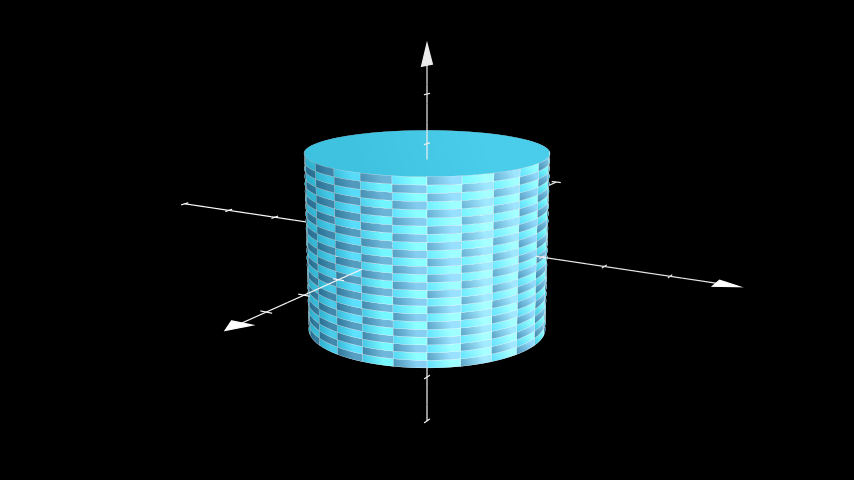Cylinder#
Qualified name: manim.mobject.three\_d.three\_dimensions.Cylinder
- class Cylinder(radius=1, height=2, direction=array([0., 0., 1.]), v_range=[0, 6.283185307179586], show_ends=True, resolution=(24, 24), **kwargs)[source]#
Bases:
SurfaceA cylinder, defined by its height, radius and direction,
- Parameters
radius (float) – The radius of the cylinder.
height (float) – The height of the cylinder.
direction (np.ndarray) – The direction of the central axis of the cylinder.
v_range (Sequence[float]) – The height along the height axis (given by direction) to start and end on.
show_ends (bool) – Whether to show the end caps or not.
resolution (Sequence[int]) – The number of samples taken of the
Cylinder. A tuple can be used to define different resolutions foruandvrespectively.
Examples
Example: ExampleCylinder ¶

from manim import * class ExampleCylinder(ThreeDScene): def construct(self): axes = ThreeDAxes() cylinder = Cylinder(radius=2, height=3) self.set_camera_orientation(phi=75 * DEGREES, theta=30 * DEGREES) self.add(axes, cylinder)
Methods
Adds the end caps of the cylinder.
Converts from cylindrical coordinates to cartesian.
Returns the direction of the central axis of the
Cylinder.Sets the direction of the central axis of the
Cylinder.Attributes
animateUsed to animate the application of any method of
self.animation_overridescolordepthThe depth of the mobject.
fill_colorIf there are multiple colors (for gradient) this returns the first one
heightThe height of the mobject.
n_points_per_curvesheen_factorstroke_colorwidthThe width of the mobject.
- func(u, v)[source]#
Converts from cylindrical coordinates to cartesian.
- Parameters
u (float) – The height.
v (float) – The azimuthal angle.
- Returns
Points defining the
Cylinder.- Return type
numpy.ndarray